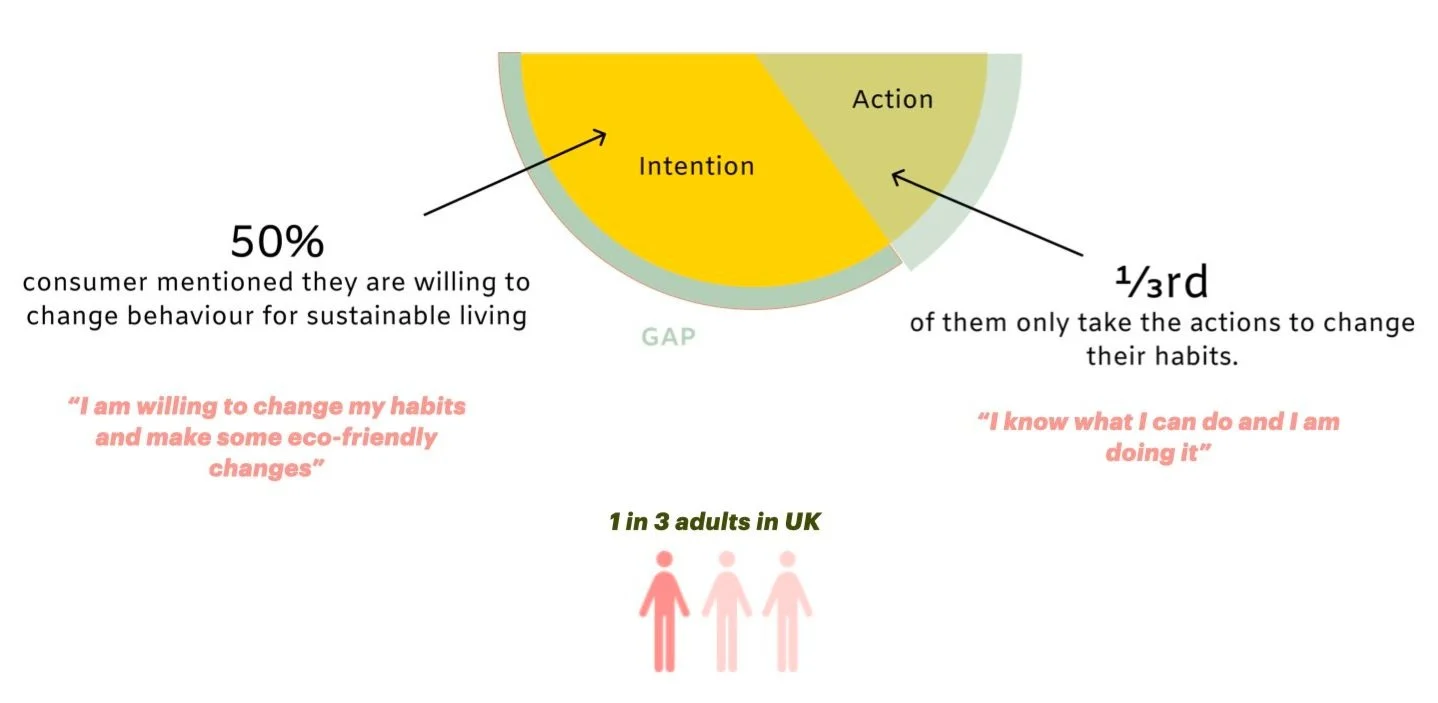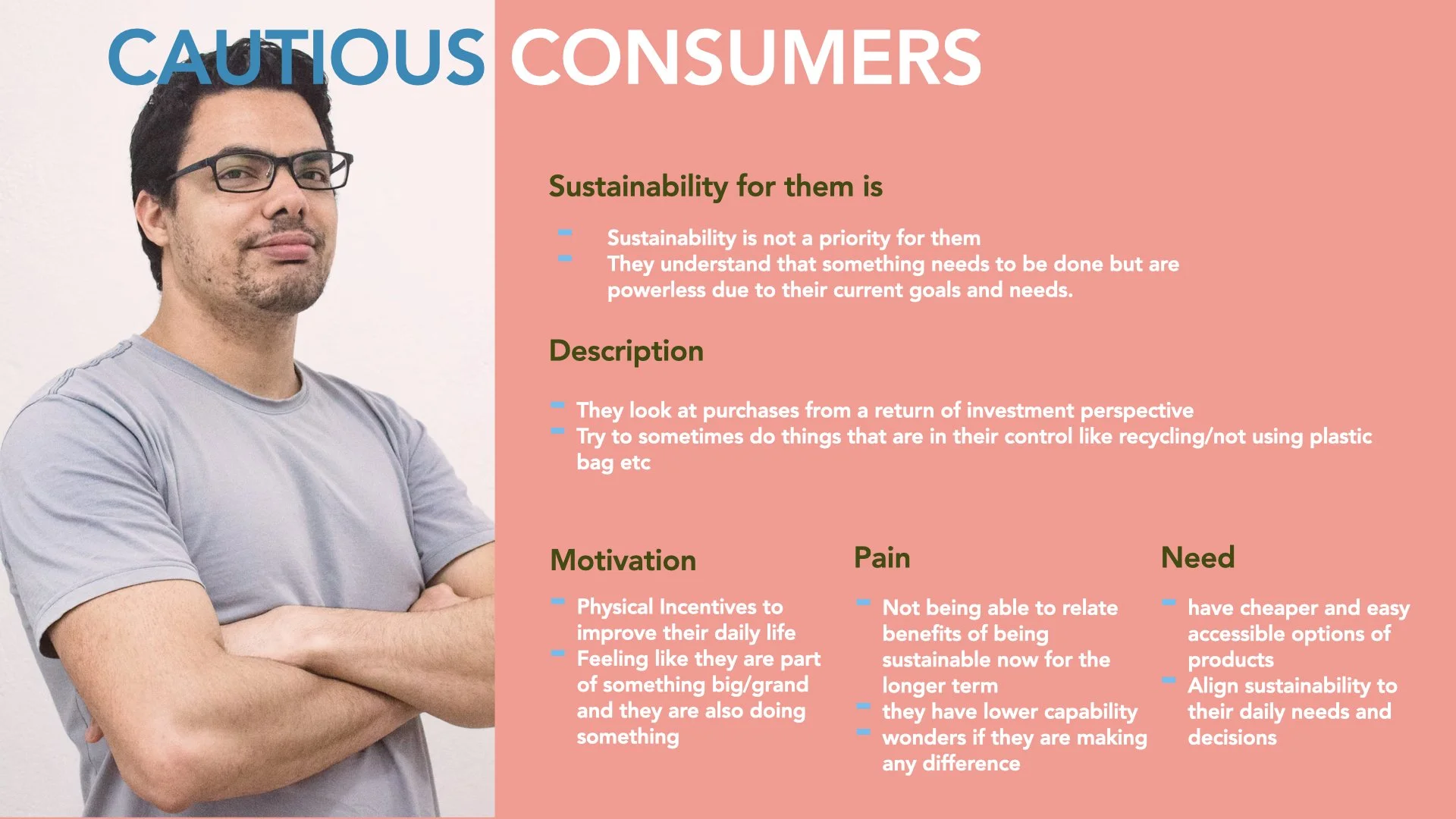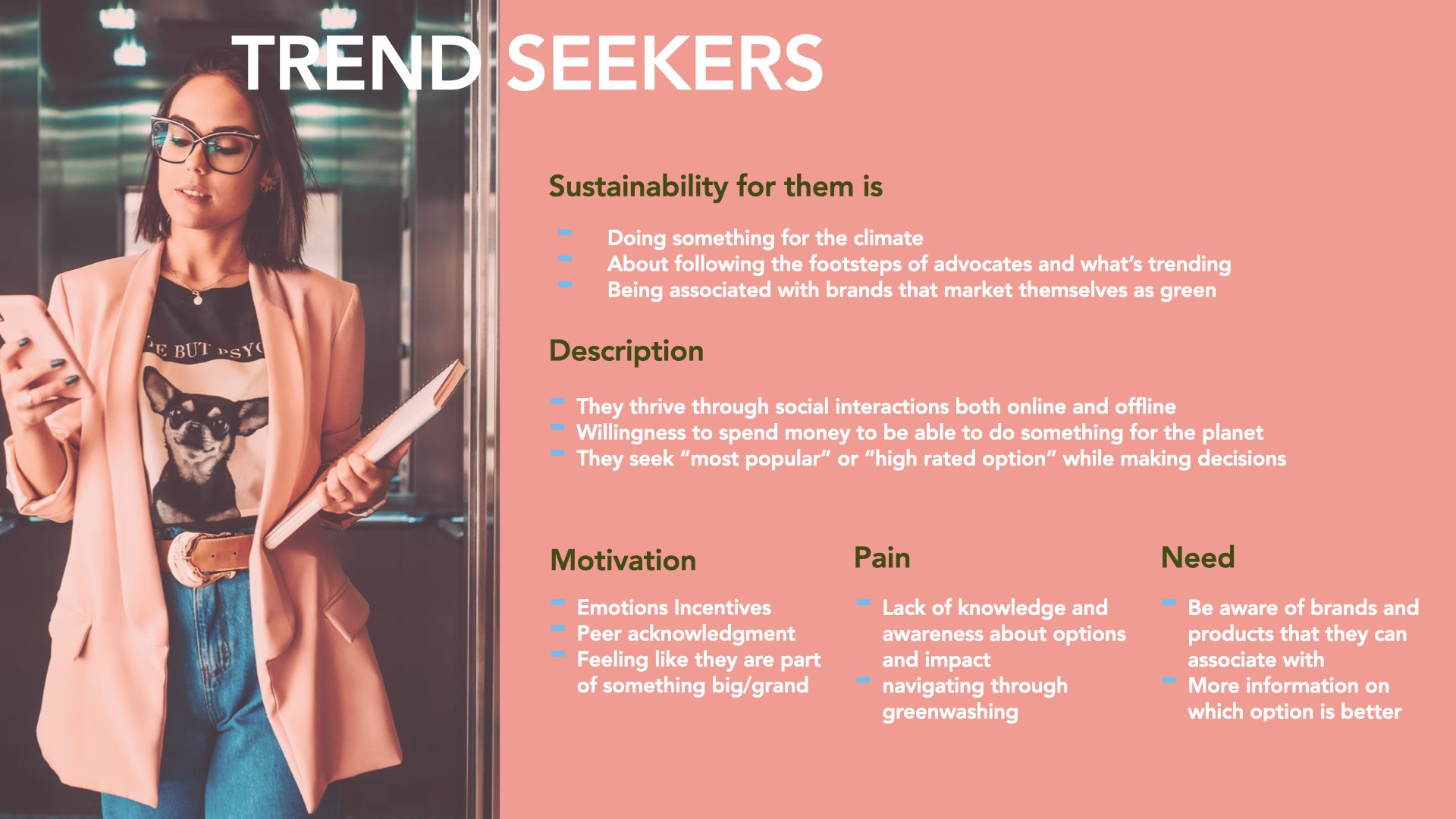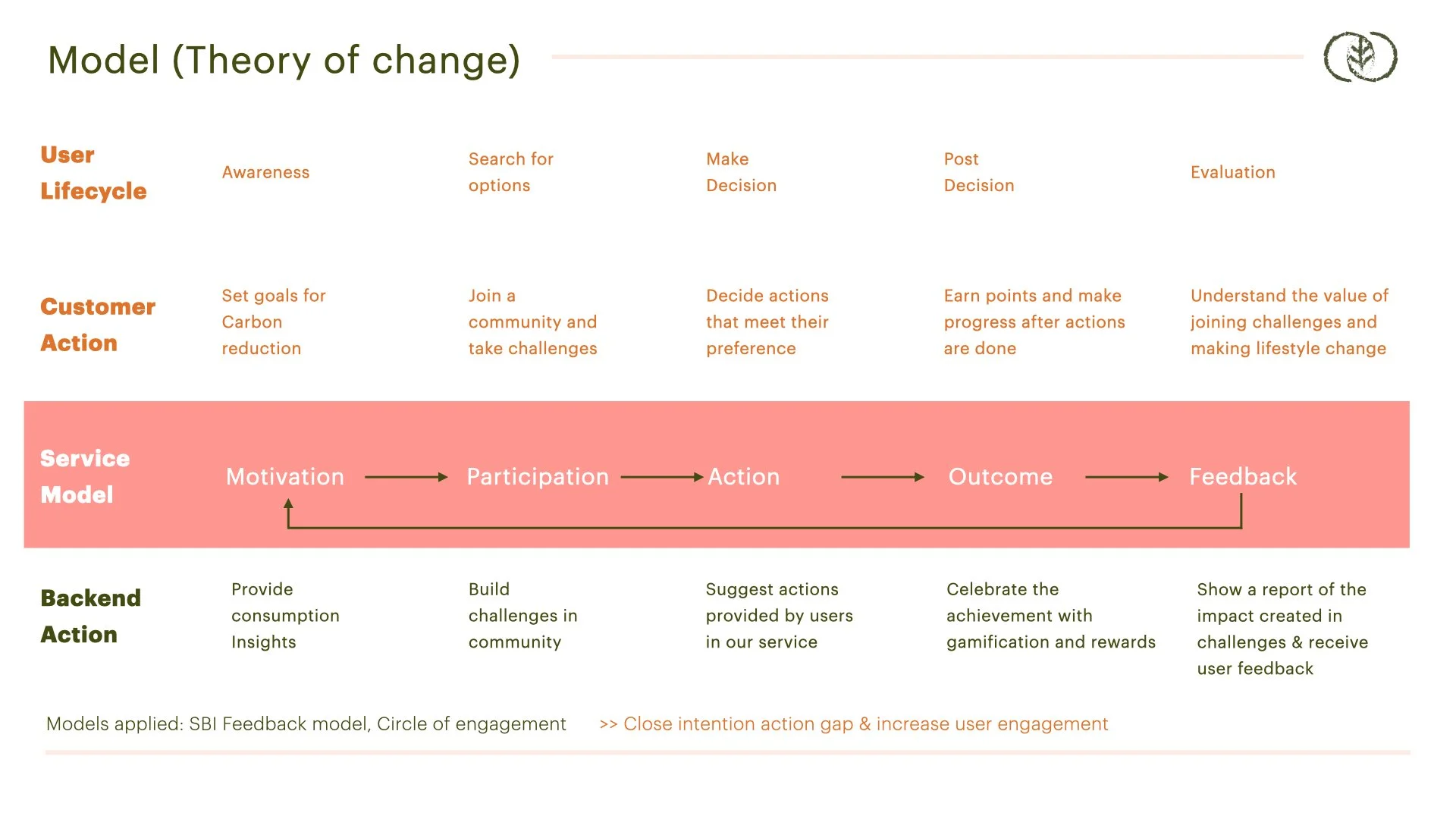User Research Service Design Design Strategy
Design framework to build community-based sustainable solutions
Our Collaborations:
This is a student project at the Royal College of Art, Service Design Department. During the span of the project, we collaborated with Kam Channa, Head of Financial Services at Royal College of Art, to build a model that helps consumers take more sustainable actions in daily life.
Our Brief:
Consumer behavior is driving towards sustainability, and consumers are consciously choosing to relate to brands that match the same values, and they want businesses to help them to adapt. How might we help consumers drive sustainable actions while using the financial services infrastructure?
Our Solution:
A sustainable lifestyle model that enables consumers to take actions that are better for the environment and reduce their footprint. The model is based on learning and sharing experiences in your community and combining forces towards climate change.
Our early study led us to the behavioral science hypothesis of the intention action gap, which has been supported by studies from companies such as IBM and Visa. The disparity between intended and actual behavior is known as the intention-action gap.
In this scenario, having the best of intentions to live a "greener," more sustainable lifestyle is just a deterrent.
When a quantitative analysis was conducted, it was shown that a gap occurs for every one in three individuals in the United Kingdom.
Desk Research
Qualitative Research
No. of participants: 16
Methods: 15-20 minute conversations with a structured questionnaire.
Consumers who actively engaged in sustainable initiatives
were concerned about climate change, which motivated them to act
They took action after learning about it online or via a friend or family member.
The aftermath of usually doing the action was said to be emotionally rewarding.
Consumers' mindsets against not taking action
Were influenced by their belief that sustainability is difficult and unrelated to daily life.
Their top priority in life was to achieve their present goals, wants, and desires.
Even if they intended to accomplish anything, comfort, ease, and accessibility typically got in the way.
They were also concerned about whether or not their actions made a difference.
Problem Definition
How might we, empower consumers to learn, act and share about reducing impact with their community so as to develop better consumption habits in the longer term?
Sharing of experiences
We discovered that users wanted to engage with other people's experiences since it gave them confidence and trust in undertaking a given activity
Developing Solutions using co-design principals
Visualising impact.
Scaling and visualizing microactions may make users' efforts more concrete, and if they can follow the changes and regularly and periodically see the impact of their adjustments, it functions as motivation to continue.
External Incentive
incentives were critical in the early phases since they provided motivation to continue doing something because it seemed instantly satisfying. As a result, it serves as an extra motivator for making green decisions in everyday life.
Designing the framework
Cahoo is a sustainability action model that integrates behavior science principles, the SBI Feedback Model (Situation, Behaviour, Impact), and the circle of engagement model to produce a new model that promotes social learning and impact.
It encourages engagement, motivates customers to take action, and offers feedback on the outcome to create a circular loop. It enables users to build a community-led marketplace of sustainable actions and businesses in order to learn and grow as a group. Cahoo also engages its users using gamification principles such as challenges, badges, and incentives.
Users
Helps to track and integrate sustainable actions in daily life
Motivates and pushes you to adapt to change through actions
Makes users feel they are not alone and their actions and effort count.
Business:
Increased engagement within their user and community
Adapting to what’s needed in the current time towards sustainability and building a competitive edge.
Measuring real actions and real changes to stand out within the new generation of users.
Planet:
Shorting the gap between intention and action
With more actions, reduce consumption of resources
Design Principles
Our design methods are based on four major principals:
We aim to foster experience sharing and utilise community belonging to take more actions from and for the community.
Personalization was critical because if sustainability is to become a part of our lives, it must be blended with our present ways of life.
There is no such thing as a good or bad action; everything that helps you lessen your influence on the environment is essential.
Make the experience enjoyable and joyful; people are already concerned about climate change; we want to give them hope and encourage them to enjoy the path of decreasing their effect.
TEAM MEMBERS:
Chin-Cheng Ou | Priyanjali Rane









